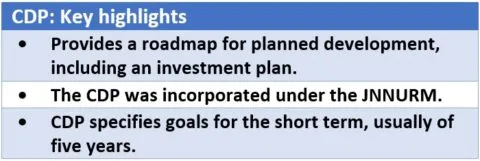Comprehensive Development Plans: A Blueprint for Local Progress
The responsibility of fostering progress and well-being falls heavily on governments, especially at the local level. To achieve this, a clear roadmap is essential. This is where Comprehensive Development Plans (CDPs) come in. In this article, we’ll delve into what CDPs are, their purpose, key components, and the benefits they offer.
What is a Comprehensive Development Plan (CDP)?
A CDP, or Comprehensive Development Plan, is a strategic document crafted by local governments to guide the long-term growth and development of a specific area. It outlines a vision for the future, identifies challenges, and proposes actionable strategies to achieve desired goals. CDPs encompass various aspects, including infrastructure, social services, economic opportunities, and environmental sustainability.
Key Difference from Master Plans
While CDPs focus on achieving development goals across various sectors, master plans often have a stronger emphasis on spatial planning, like land use allocation.
The Purpose of a CDP
The primary objective of a CDP is to establish a framework for coordinated and sustainable development. Here’s how CDPs achieve this:
Setting a Clear Vision
A well-defined vision articulates the desired future state of the area, providing a common direction for stakeholders.
Prioritizing Goals
By identifying key areas for improvement, the CDP ensures resources are allocated effectively to address pressing issues.
Promoting Collaboration
CDPs encourage participation from various stakeholders, including citizens, businesses, and community organizations, fostering a sense of shared ownership.
Guiding Resource Allocation
The plan prioritizes projects and programs, ensuring efficient use of public and private funds for maximum development impact.

Components of a Comprehensive Development Plan
A comprehensive CDP typically includes the following elements:
Situational Analysis
This section establishes a baseline by assessing the current state of the area, highlighting strengths, weaknesses, opportunities, and threats (SWOT analysis).
Vision and Goals
Here, the desired future state is outlined, along with specific, measurable, achievable, relevant, and time-bound (SMART) goals to achieve that vision.
Strategies and Policies
This section details actionable plans to translate goals into reality. It outlines specific programs, projects, and regulations to address development priorities.
Implementation and Monitoring
A robust monitoring and evaluation framework is crucial for measuring progress, identifying challenges, and ensuring the CDP remains adaptable to changing circumstances.
Benefits of a Comprehensive Development Plan
By providing a clear roadmap for growth, CDPs offer a multitude of benefits:
Improved Decision-Making
CDPs guide resource allocation and project selection based on a well-defined vision, leading to more strategic development choices.
Enhanced Sustainability
By considering environmental and social factors alongside economic considerations, CDPs promote a holistic approach to development.
Increased Public Participation
The CDP process often involves public engagement, encouraging citizens to contribute to shaping their community’s future.
Attract Investment
A well-defined CDP creates a stable and predictable development environment, making the area more attractive to investors.
Conclusion
In conclusion, a Comprehensive Development Plan serves as a blueprint for a community’s future. By laying out a shared vision, prioritizing goals, and fostering collaboration, CDPs empower local governments to drive sustainable and inclusive development.
Got any questions or point of view on our article? We would love to hear from you. Write to our Editor-in-Chief Rajat Piplewar at [email protected].
